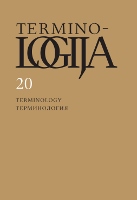Pastatų konstrukcijų ir jų sudedamųjų dalių liaudies terminija
Folk terminology of building constructions and their parts
Author(s): Robertas StunžinasSubject(s): Customs / Folklore, Theoretical Linguistics, Lexis, Semantics, Baltic Languages
Published by: Lietuvių Kalbos Institutas
Keywords: building folk terms; building design names; synonyms; multivariate terms; related terms;
Summary/Abstract: The article deals with folk terminology of constructions and their parts of traditional Lithuanian buildings in respect of concepts, origin and semantic relations: synonymy, polysemy and hierarchy. The researched terms are taken from various lexicographical sources of Lithuanian folk terminology. There are 422 terms in the researched sources which name about 200 different constructions and their parts. The majority of terms name roof and wall constructions and their parts, for example dangtis (roof), kraigas (ridge), gegnė (rafter), siena (wall), sienojas (log), pamatinis (main log). A smaller part of the terms name door and window constructions and their parts, room coverings and planks, for example durys (door), stakta (door frame), langas (window), apylangės (window frame), lubos (ceiling), juodlubės (sound boarding), lenta (plank), špuntas (rebate). A few terms name flooring, foundation, foundation parts and bricks, for example grindys (floor), pamūra (foundation), papamatis (foundation stones), plyta (brick). The majority of terms are of Lithuanian origin (63%), for example asla (dirt floor), pamatas (foundation), užlos (ceiling). Slavic, Germanic and Latvian borrowings make up more than one quarter (28.9%), hybrids and terms with mixed composition – less than one tenth (8.1%), for example dokas (Pol. dach) ‘roof ’, švelys (Germ. Schwelle) ‘lower balk’, stūrys (Latv. stūris); pamūra (Lith. pa- and Sl. mur) ‘foundation’, molinė (Lith.) padlaga (Sl. podłoga, Belar. пaдлoгa) ‘dirt floor’.
Journal: Terminologija
- Issue Year: 2013
- Issue No: 20
- Page Range: 180-200
- Page Count: 21
- Language: Lithuanian

